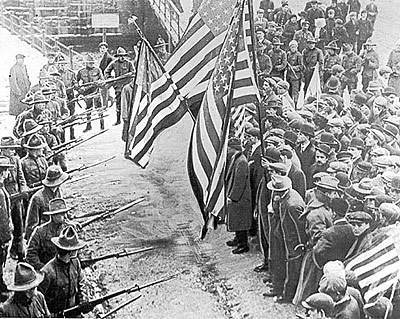
Unit 4: Nationalism, Industrialism, and Imperialism
Lesson H: Social Responses to an Industrialized World
Lesson Overview
Over the course of the 18th and 19th centuries, the world underwent vast changes that left a huge divide between individuals and between countries. The Industrial Revolution had transformed Europe and the United States into global powers. Coal and steam power drove industrial machinery enabling these countries to greatly increase their production of manufactured goods at less cost. However, while the Industrial Revolution brought more wealth to the country as a whole, not every person benefited. Within these countries the middle class rose in wealth and power through the industrial revolution, while the working class often suffered poor working and living conditions. Much of the story of the 19th century in Europe was how society dealt with both the benefits and the unexpected problems that arose from the Industrial Revolution.
On a global scale, technological and economic advancement allowed a second wave of European imperialism to take place. Africa, India, and Southeast Asia came under Western domination as colonies. These colonies were forced to produce cheap raw materials for the industrial countries and were subject to European policies and culture. Yet the rapidly changing world and growing inequalities of the 19th century did not go by unnoticed. The 19th century also saw the emergence of many social responses and opposition to industrialism and imperialism. Workers began to organize and demand more rights, leading to the growing popularity of the socialist movement. Art movements emerged, such as Romanticism and Realism that showed clear reactions to the time. Education grew in importance and underwent reforms.

Textile Workers Go on Strike in Massachusetts [1]
Key Questions
- How did industrialization and imperialism create inequalities between countries?
- How did different people respond to 19th century industrialization and imperialism?
- How did social reform movements impact the world during the 19th century?
Student Outcomes
- Analyze the impacts of Socialist and Marxist beliefs and programs on politics, industry, and labor relations in late 19th century Europe.
- Summarize how expanded educational opportunities and literacy changed European society.
- Examine the impact of political, economic, and social events on the artistic movements of 19th Century European society.
- Support interpretations with historical evidence in order to construct closely reasoned arguments. (Historical Thinking Skill)
- Evaluate multiple perspectives of various peoples in the past by demonstrating their differing motives and beliefs. (Historical Thinking Skill)
Key Terms
Student Resources
- Historical Investigation - The Communist Manifesto (doc)
- Artists Respond to Change Art Jigsaw Factsheets (pdf)
- Artists Respond to Change Jigsaw Graphic Organizer (doc)
- Image Analysis of the Industrialized World Brief Constructed Reponse (BCR) (doc)
Chart of Activities
| Activities to Complete | Estimated Time |
|---|---|
| Pre-Assessment | 5 minutes |
| Key Terms | 5 minutes |
| Activator: The World 1815-1914 | 10 minutes |
| Opening: Explaining Responses to Change | 10 minutes |
| Activity 1: Socialism Emerges | 15 minutes |
| Activity 2: The Communist Manifesto | 20 minutes |
| Activity 3: Supporters of Socialism | 5 minutes |
| Activity 4: Education Reform | 15 minutes |
| Activity 5: 18th and 19th Century Classrooms | 15 minutes |
| Activity 6: Education Comparison | 5 minutes |
| Activity 7: Artists Respond to Change | 20 minutes |
| Review and Assessment | 10 minutes |
| Lesson Summary | 5 minutes |
Lesson Completion Time
The total estimated time to complete this lesson is 140 minutes.
Page Notes:
[1] Source: This image from http://en.wikipedia.org/wiki/File:1912_Lawrence_Textile_Strike_1.jpg is in the public domain.

